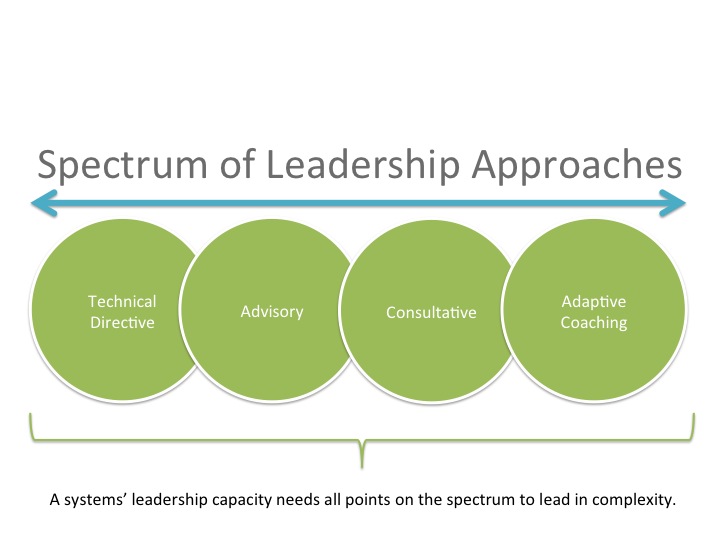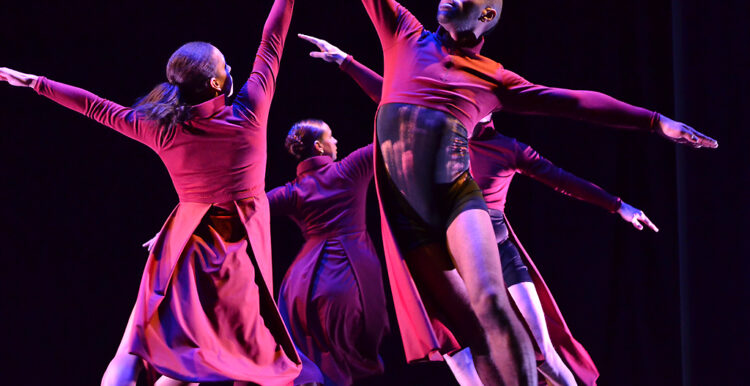We operate in a time of increasing complexity, where we frequently cannot control or predict what will effect change, where dynamic forces affect the broader movement ecosystem, and where interdependent relationships are vital to our work. To progress on the long arc of justice we need to get much smarter about how to engage the leadership of all who care about justice. We need to transcend the futile search for the one or two best leadership approaches and understand a spectrum of leadership—to know what kind of leadership is required by a particular context or task, and to create the conditions in people and systems to flex across these approaches to leadership.
That there are different ways to exercise leadership is not a new revelation. Many concepts and practices of leadership have been explored, embraced, discarded, studied and even proselytized in organizational and movement contexts since the mid 20th century. In the last ten years (largely as a result of the increasingly dynamic and complex settings most organizations find themselves in), there has been a flurry of interest in a range of leadership models designed to deepen and more fully engage our combined capacity to transform our communities and the world—such as shared leadership, distributed leadership, collective leadership, collaborative leadership, etc.
Our intention here is not to define these terms or to specify what leadership should look like for our movements and organizations but to share a frame for leadership – to understand what leadership approach might be needed at different times in our movement spaces and what supports people and systems to respond and function effectively.
“To halt the decline of an ecosystem, it is necessary to think like an ecosystem.”
Doug Wheeler
The Spectrum

Leadership is not a codified set of structures or practices or even a fixed state. Rather there is a spectrum of leadership approaches that make the most sense in different kinds of situations and contexts. At one end, leadership is almost always positional with a single person or relative few in an expert role, giving directives. At the other end, leadership is inclusive of multiple voices and perspectives and levels of authority that all have a share of the solution to any given challenge. Neither end is good or bad but more or less useful in different situations.
Organizations and movements need both ends and everything in between. For example ensuring the safety of all residents of New Orleans in the immediate aftermath of hurricane Katrina (a reasonable leadership choice in a chaotic situation) requires a different set of leadership skills than setting strategic directions in a movement network context (a reasonable leadership choice in a complex situation).
In an organizational or network system, the role of those with positional authority is the continued attention to the readiness and capacity of self and others to respond appropriately to simple, complicated and complex contexts (Snowden and Boone, HBR, 2007). The positional leaders with the most authority in a system hold primary accountability for the development and exercise of this attention, capacity, and readiness. Everyone in the system is responsible for showing up (and is supported to show up) in their role with the appropriate level and kind of leadership—all serving the common vision and in alignment with explicit and shared values.
Wisdom Story
One way everyone having the capacity to show up as a leader in a system can look is modeled by Forward Together, which is the backbone organization of Strong Families. Everyone in the network is exposed to a common practice called Forward Stance. Forward Together Executive Director Eveline Shen describes Forward Stance as a primary tool in the network for addressing conflict, moving through “stuckness,” focusing energy, and generating strategy. It is a directive leadership and followership practice that provides opportunities for everyone to experience leading, thus building the capacity to exercise directive leadership in multiple contexts.
Check out the second part of this series: Widening the Spectrum of Leadership Part Two: What it Looks Like and the Capacity to Flex
This series builds on case stories developed early on in our Network Leadership Innovation Lab, our learning during the Lab, our work with clients and previous thinking on shared leadership (“Doing More with More” by Mike Allison and MAG Senior Consultants Susan Misra and Elissa Perry). Explore more learning from the lab on our publications page.
Banner photo credit: U.S. Consulate Vladivostok | CC BY-ND 2.0





